Chapter 13 Agriculture
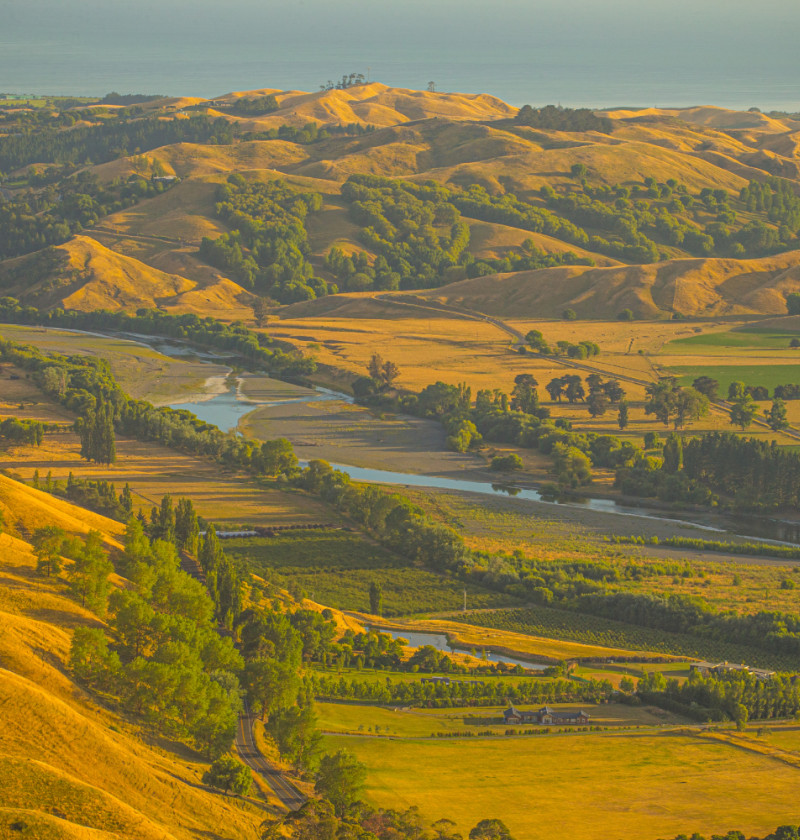
Download a PDF version of this chapter [PDF, 983 KB]
The actions of this plan will build on the efforts of our farmers, growers, businesses, sector bodies and government agencies to deliver a low-emissions future and resilient rural communities.
|
Projected emissions without the initiatives in this plan |
163.1 Mt CO2-e |
|
Projected average annual emissions without the initiatives in this plan |
40.8 Mt CO2-e |
|
Projected percentage of total gross emissions without the initiatives in this plan |
50 per cent |
| Estimated emissions reduction from the initiatives in this plan | 0.3 to 2.7 Mt CO2-e |
Agricultural emissions make up 50 per cent of Aotearoa New Zealand’s gross emissions, including most of our emissions of nitrous oxide and biogenic methane. Reducing these emissions is needed to achieve our 2050 target, including the requirement to reduce biogenic methane emissions by 24–47 per cent by 2050.
Reducing agricultural emissions will enhance Aotearoa New Zealand’s reputation as a low-emissions and trusted provider of agricultural products. This plan must work with other initiatives to improve productivity, sustainability and inclusivity in the primary sector in line with the Government’s Fit for a Better World – Accelerating our Economic Potential roadmap.
In July 2020, the Government released its vision and roadmap for the sector – Fit for a Better World: Accelerating our Economic Potential [PDF, 2.1 MB].
The vision for the sector is to meet the greatest challenge humanity faces – rapidly moving to a low-carbon emissions society, restoring the health of our water, reversing the decline in biodiversity and, at the same time, feeding our people. It envisages designing modern regenerative production systems fit for a better world, alongside innovative science and technology. Achieving this vision will increase the economic and environmental resilience of farmers and growers in Aotearoa, including helping ensure high-value exports markets for low-emissions food products.
At the heart of this vision is te taiao. For Māori, te taiao is the natural world that contains and surrounds humanity in an interconnected relationship of respect. The Te Taiao Framework* has been developed with guidance from mātauranga Māori specialists, farmers and growers, sector experts and scientists.
The health of the climate, land, water and living systems comes first. When nature thrives, so do our families, communities and businesses. The Te Taiao Framework also represents new leadership based on a genuine partnership with Māori.
Embracing te taiao and reducing emissions will require mahi tahi – working together – with Māori and the sector, to support a transition to a lower-emissions future for agriculture. This will lay the foundations
The agriculture sector not only makes up half of Aotearoa New Zealand’s greenhouse gas emissions, but it is also highly exposed to the impacts of climate change. Reducing emissions from the agriculture sector will allow us to meet market expectations for sustainable, low-emissions products and improve the resilience of our rural communities.
The impacts of climate change are already being felt across Aotearoa New Zealand’s agriculture sector. Across all regions, increasing pressure is being felt through drought (including in regions which have not previously experienced drought) and increased flooding and extreme weather events. Increased rainfall events are projected across the country and increased drought severity is projected to increase in almost all regions.*
Aotearoa is a leader in sustainable agricultural innovation and by addressing our own agricultural emissions, we can provide solutions for the rest of the world.
* Climate change scenarios for New Zealand [NIWA]
The agriculture sector contributes 50 per cent of Aotearoa New Zealand’s gross emissions. Approximately 94 per cent of our nitrous oxide emissions and around 91 per cent of our biogenic methane emissions are from agriculture.
About three-quarters of agricultural emissions are biogenic methane emitted from livestock, followed by nitrous oxide. Nitrous oxide emissions from nitrogen fertiliser use make up about 3.9 per cent of agricultural emissions.
Agriculture needs to contribute to meeting our climate goals.
Nitrous oxide and carbon dioxide emissions from agriculture are included in our net-zero target for 2050. However, there are separate 2030 and 2050 targets for biogenic methane emissions. The target is to reduce biogenic methane emissions by 10 per cent by 2030, relative to 2017 levels, and 24 to 47 per cent lower by 2050.
The split gas target reflects the different impact of methane – which is a short-lived gas – compared to carbon dioxide and nitrous oxide, which are long-lived gases. While methane remains in the atmosphere for less time, its warming effect is 28 times greater than carbon dioxide.*
Like all greenhouse gases, methane emissions make the world warmer than it would be otherwise. The Intergovernmental Panel on Climate Change (IPCC) advises that rapid, steep methane reductions, alongside bringing global carbon dioxide emissions to net zero by 2050, are needed to limit global warming to 1.5˚C.
* This statement is based on information in the Fifth Assessment Report of the United Nations Intergovernmental Panel on Climate Change, completed in 2014 [IPCC website]
The agriculture sector is a significant part of the Aotearoa economy, accounting for 10 per cent of our GDP, over 65 per cent of our export revenue, and nearly 12 per cent of our workforce.*
The sector plays a key role in the Māori economy, as tangata whenua have made significant investments in agriculture, with assets of NZ$8.6 billion in sheep and beef farming and NZ$4.9 billion in dairy farming, in addition to investments in forestry and land retirement.** Hapū, iwi and whenua Māori entities are estimated to own 30 per cent of sheep and beef production and 10 per cent of dairy production.
Farming also provides a way of life for our rural communities.
However, the sector is highly exposed to the impacts of climate change, such as droughts and floods, as well as to global responses to climate change.
Other jurisdictions are starting to consider how trade levers can be used to enforce sustainability requirements on imported goods.
While market pressure poses a risk to the sector, it also presents an opportunity to meet the market with low-emissions agricultural products. In turn those consumer preferences will increasingly drive our transition to a lower-emissions agriculture sector.
Our actions now put us in a better position to meet the needs and requirements of markets in the future.
* Situation and Outlook for Primary Industries (SOPI) [PDF, 18.4 MB]
** Te Ōhanga Māori – The Māori Economy [PDF, 17 MB]
In transitioning the agriculture sector, we need to ensure that the sector is in the best position to seize the opportunities of the transition.
Producers are responding to an increasing number and range of changes – which stem from shifting market requirements (through supply agreements), as well as regulatory changes. The number and speed of these changes will have cumulative impacts on farm productivity and profitability, social and mental wellbeing and the resilience of our rural communities. The effects of those changes on each farm or business will vary.
Agricultural emissions make up a large proportion of the overall Māori emissions profile. The Government is committed to partnering with Māori to support Māori-led solutions to meeting our climate objectives. The Government is working with Māori to understand the issues that affect their interests and whenua within key work programmes, but there is more to be done.
Reducing biological emissions while providing for the economic and social resilience of our rural communities over the long term requires that we have the right tools, technologies and supports in place to enable producers to make changes that reduce their emissions.
The actions in this chapter outline how the Government, farmers and growers, industry and Māori will work together to reduce emissions in a way that improves the resilience of our rural communities, maximises the opportunities of the transition and protects Aotearoa against potential disruptive global shocks as our export markets respond to climate change.
This section outlines the Government’s approach in partnership with industry and Māori to reducing agricultural emissions. It focuses on actions over the next three years and sets the foundation for more accelerated reductions over the next 15 years.
Many of the actions in this section build off He Waka Eke Noa – Primary Sector Climate Action Partnership (He Waka Eke Noa) that was established in 2019. This has seen the Government work in partnership with the primary sector, Māori, farmers and growers on practical solutions to reduce agricultural emissions and build resilience to climate change.
Many producers are already reducing their emissions through actions such as precision fertiliser application and planting marginal land. New mitigation technologies are also emerging that can make noticeable reductions in methane and nitrous oxide emissions. However, barriers prevent widespread action.
The Government, industry and iwi/Māori are targeting actions to overcome these barriers and enable further development of mitigations technologies.
Five key focus areas for agriculture have informed the actions included in this emissions reduction plan. These are being driven by our response to He Pou a Rangi – Climate Change Commission’s (the Commission) recommendations, feedback from public consultation and the Government’s commitment to an equitable transition to a low-emissions future for Aotearoa.
Actions are outlined within our first four focus areas (see figure 13.1). The fifth focus area, "enable Māori-led solutions", is cross-cutting and embedded in actions and work with Māori across the other four focus areas.
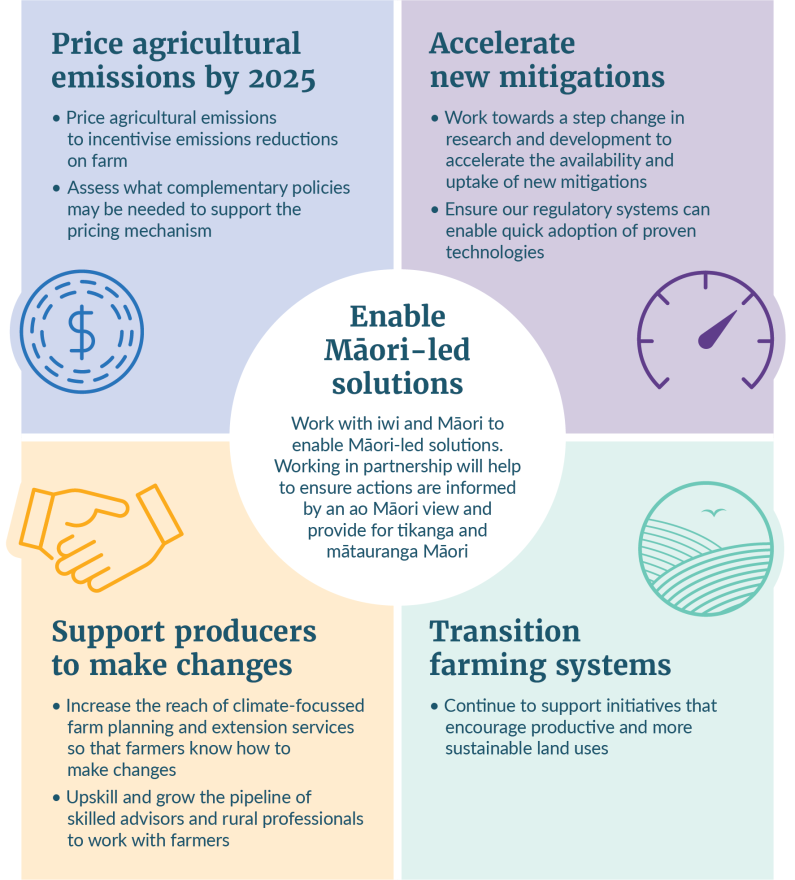
Price agricultural emissions by 2025
Accelerate new mitigations
Enable Māori-led solutions
Support producers to make changes
Transition farming systems
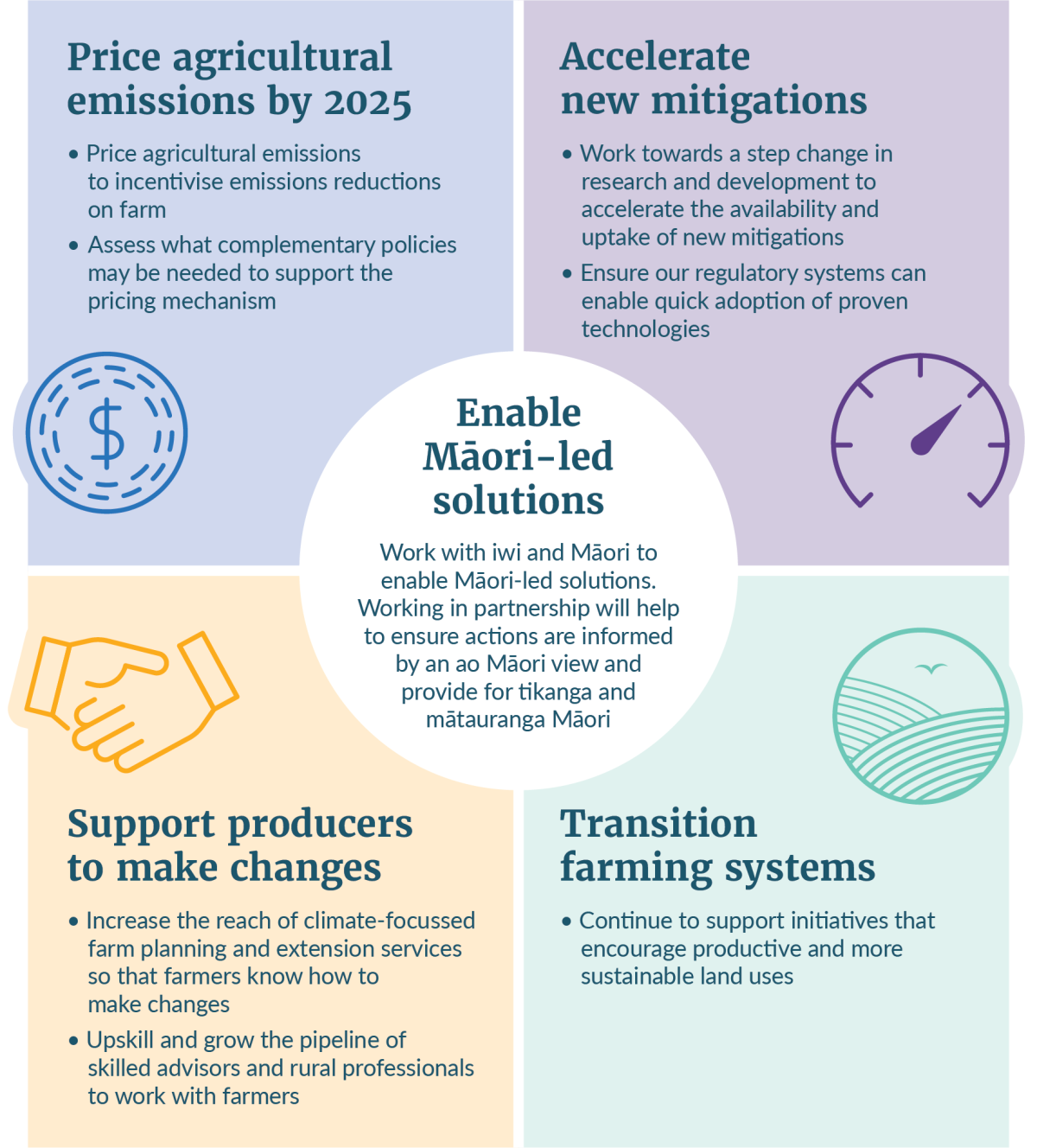
Price agricultural emissions by 2025
Accelerate new mitigations
Enable Māori-led solutions
Support producers to make changes
Transition farming systems
This focus area will enable the Government to deliver one of the Commission’s key recommendations: ensuring effective pricing of agricultural emissions.
A key priority of He Waka Eke Noa is to deliver advice on how to price agricultural emissions. Pricing agricultural emissions helps create an incentive for emitters to adopt cost-effective mitigations.
He Waka Eke Noa has explored alternative pricing approaches to the New Zealand Emissions Trading Scheme (NZ ETS) to ensure that the agricultural emissions pricing scheme is effective in driving emissions reductions at the farm level. Its final advice will be provided to Ministers by 31 May 2022.
Expected emissions reductions will depend on the details of the recommended pricing mechanism, such as what mitigations are recognised and rewarded, and how revenue is recycled to support further reductions.
The Commission will report to Ministers by 30 June 2022 on:
* See Climate Change Response Act, Schedule 5: Primary sector climate change commitments [New Zealand Legislation website]
To help prepare producers for the introduction of emissions pricing, He Waka Eke Noa has been supporting producers to know their emissions – through the "know your numbers" initiative – and have a plan to measure and manage emissions.
The Climate Change Response Act 2002 has legislated milestones for:
As at 31 December 2021, 61 per cent of surveyed farms* knew their annual total of on-farm emissions and as at 1 January 2022, 21 per cent of farms had a written plan to measure and manage their emissions.
He Waka Eke Noa has also produced Greenhouse Gases: Farm Planning Guidance [PDF, 12.1 MB] to support farmers to incorporate emissions into their farm plan.
* He Waka Eke Noa Milestone update and six-month progress report [PDF, 3.4 MB]
The Government is considering support for early adoption of on-farm changes that will reduce emissions before the introduction of an agriculture emissions pricing system and revenue recycling system from 2025. This support would focus on achieving emissions reductions beyond actions that farmers are already commercially incentivised to take.
Support being considered includes:
This focus area will speed up the availability of emissions reduction mitigation technologies. The Government and industry have invested about NZ$200 million over the last 10 years* into agricultural emissions mitigation research, capability building and international leadership.
This investment has contributed to building an evidence base, developing new technologies, increasing animal productivity while reducing emissions, and improving emissions measurement.** For example, it is now possible to selectively breed lower methane emitting sheep without any adverse effects.
Other initiatives being investigated include low-methane and low-nitrous oxide emitting feeds, methane and nitrous oxide inhibitors, and a methane vaccine for ruminants.
* This figure includes government funding of NZ$82.500 million over 10 years for the Global Research Alliance on Agricultural Greenhouse Gases, NZ$69.050 million over 10 years for the New Zealand Agricultural Greenhouse Gas Research Centre, and NZ$23.025 million over 10 years for the Pastoral Greenhouse Gas Research Consortium (funding in the consortium was matched 50:50 by industry). The figure excludes smaller funds, or funds used for broader outcomes, such as the Sustainable Food and Fibre Futures fund [Ministry for Primary Industries website]
** Domestic research has been supported through the government-funded New Zealand Agricultural Greenhouse Gas Research Centre, alongside other programmes, including the Sustainable Food and Fibre Futures fund, the Sustainable Land Management and Climate Change research programme, New Zealand’s Greenhouse Gas Inventory research fund [Ministry for Primary Industries website] and the Pastoral Greenhouse Gas Research Consortium.
The Government will strengthen the role of research and development in accelerating the availability and uptake of new mitigations, and get mitigations to producers sooner.
This work will be underpinned by a research and development plan for science and mātauranga Māori to reduce biological emissions from agriculture. This plan is being developed by the Government in partnership with industry, Māori and the science sector, under the Fit for a Better World roadmap.
It takes a comprehensive system-level view of what is needed to accelerate the availability of mitigations to farmers, across the full pathway from knowledge to impact.
A step change in investment, by both government and industry, is needed to accelerate delivery of emissions reduction tools and technologies and getting these into the hands of farmers sooner.
Government has committed to a significant increase in investment to accelerate the development of greenhouse gas mitigations, including the establishment of a Centre for Climate Action on Agricultural Emissions (the Centre), to drive our efforts.
The Centre will include a new public-private joint venture with a focus on product development and commercialisation to drive our research and development (R&D) activity, and will deliver on three key outcomes:
The joint venture will be supported by an enhanced New Zealand Agricultural Greenhouse Gas Research Centre, with a focus on strengthening the underpinning R&D system. Discussions with the private sector on investment and participation in a joint venture are well advanced.
The Government is working with Māori to enable mātauranga Māori-based approaches that will support Māori entities to define Māori priorities for climate change mitigation.
This will support climate action, and involve entering into strategic partnerships with business, science, research and the Government as appropriate. These programmes will be Māori led.
To make it easier for producers to adopt new mitigation technologies, the Government will strengthen and streamline the greenhouse gas mitigation regulatory regime.
Aotearoa will use our significant agricultural investments, commitments and experience to increase global ambition and action to reduce agricultural emissions, while supporting food and nutrition security and sustainable development.
This focus area will work towards supporting producers by enhancing access to the right information, knowledge and tools to make changes that best fit their farming system. As new technologies become available, it will be critical to support and enable uptake at farmer and grower level, translating research and science into on-farm action, and working closely with focus area 2.
The Government is working with industry on specialised climate-focused extension services to help producers adopt emerging technologies and practices. These services provide credible, trusted and relevant information to producers on reducing emissions. They would complement and build on the extension activities already underway through industry groups.
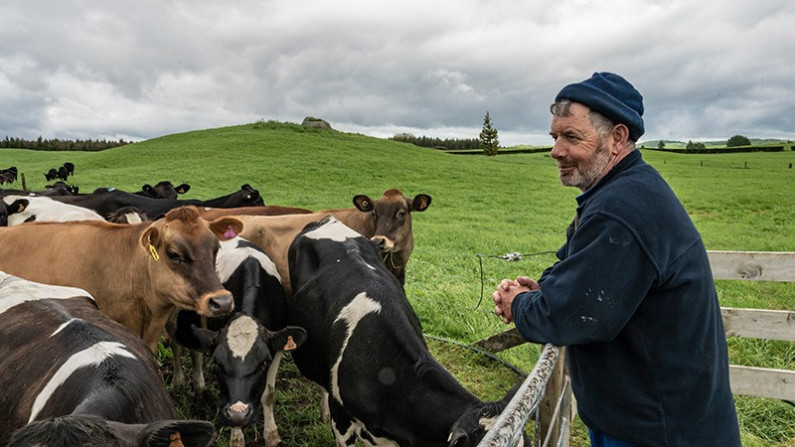
The Ag Matters website provides science-backed information for farmers, growers and rural professionals on agricultural greenhouse gas emissions. It is managed by the New Zealand Agricultural Greenhouse Gas Research Centre with support from the Ministry for Primary Industries.
The website provides the latest scientific knowledge, with background information and resources, to help Aotearoa New Zealand’s primary sector understand how they can manage on-farm emissions.
It collates current mitigation actions, including adjusting stocking rate and increasing performance, reducing nitrogen fertiliser and using urease inhibitors, introducing low-emissions feeds, and once-a-day milking. The success of these actions and the size of the emissions changes has been demonstrated by farmers around Aotearoa.
Ag Matters also provides information on future mitigation technologies under research, and helpfully summarises the latest policy developments.
An important part of the Ag Matters website is its collection of farmer case studies. These share how different Kiwi farmers are getting their heads around climate change, what their on-farm emissions are, and what actions they are planning or already taking to manage them. The case studies also demonstrate that it is possible to reduce emissions at the same time as maintaining or increasing a farm’s profitability.
The Government will introduce:
Specialised climate-focused services will complement wider efforts by industry and the Government to support whole-of-system farming change, including by strengthening the Ministry for Primary Industries' Primary Industry Advisory Services and implementing its Integrated Farm Planning programme.
Existing and proposed extension and advisory services include best practice advice to reduce emissions from nitrous oxide from fertiliser. Actions to reduce synthetic nitrogen fertiliser include:
Māori face a unique set of challenges transitioning to lower-emissions agriculture. For example:
Without a focus on a Māori-led transition, there is a risk that climate policies may lock in low-value land uses for whenua Māori and compound historical disadvantages.
For Māori, tikanga-based programmes are needed to support the transition to a low-emissions future for Māori landowners, and to ensure the intergenerational wellbeing of Māori. Such programmes will:
This action will complement the Māori Agribusiness Extension programme (MABx) [Ministry for Primary Industries website] which aims to build networks and knowledge of Māori agribusinesses, trustees and landowners to undertake change and achieve more from their whenua.
To date, as of 31 December 2021, 70,911 rural homes and businesses can access improved broadband and 983 km of rural State Highway have been provided with mobile coverage. 310 mobile towers are now live, and 70 mobile towers have had a necessary capacity update.*
However, many rural communities have internet connections of limited performance, and it is estimated that there are around 5,200 rural premises with no internet service at all. Further providing, or enhancing, broadband internet connectivity (in terms of coverage and performance) will benefit farmers and others working in the primary sector through:
Better broadband connectivity and access to online software and services will also reduce transaction costs associated with farm planning, monitoring and reporting. For any farm-level pricing system, uploading data and evidence into the reporting system will be critical. Better digital connectivity will likely help farmers reduce the time and effort needed to participate in these systems.
* See Quarterly Connectivity Updated Q4: to 31 December 2021 [PDF, 7.6 MB].
Improved rural access to information and online tools can support uptake of new emissions mitigations technologies.
As identified in the Fit for a Better World roadmap, the Government and industry will assist producers in a transition to a more circular and low-emissions economy, integrating the ki uta ki tai (from the mountains to the sea) principle into sustainable land management.
Over the course of the first emissions budget, the Government will continue to fund initiatives that support a more sustainable, productive and inclusive primary sector. The Government will explore opportunities for the state-owned Landcorp Farming Limited (trading as Pāmu) to lead in this area.
The Government will continue to invest around NZ$40 million per annum via the Sustainable Food and Fibre Futures co-investment fund, with a number of initiatives expected to have a focus on sustainability.
As an example, in 2022 the Government will invest in prototyping spatial integrated farm plan – a mapping tool to support farm plans that include environmental and greenhouse gas reduction considerations as well as farm productivity.
More research is needed to understand and measure the potential environmental benefits of regenerative agriculture – a nature-based solution – in Aotearoa New Zealand’s specific context – including how such practices can contribute to our 2050 targets.
Regenerative agriculture practices aim to increase soil carbon, improve soil health and contribute to improved freshwater quality, reduce the climate footprint of food systems and enhance biodiversity.
A Technical Advisory Group for regenerative agriculture was established by the Ministry for Primary Industries in September 2020. Its purpose is to help establish an evidence base for regenerative farming and horticultural practices. The Sustainable Food and Fibre Futures fund is investing in projects to test and validate regenerative agriculture practices.
The Government will work with Aotearoa New Zealand’s largest farmer, the state-owned enterprise Landcorp Farming Limited (trading as Pāmu), to investigate options to further reduce its gross emissions beyond current plans.
This work will consider opportunities for Pāmu to demonstrate sector leadership by accelerating on-farm emissions reductions while continuing to fulfil its principle objective of operating as a successful business over the long-term.
Pāmu manages 110 farms over 364,000 hectares, which in financial year 2021 contributed 0.75 Mt CO2-e gross annual emissions and sequestered around 0.33 Mt CO2-e per annum, with revenue primarily coming from dairy and livestock farming.
Pāmu has already committed to achieving gross emissions reductions of four per cent per annum out to 2024 and setting longer-term science-based emissions targets for its operations.
Through the Fit for a Better World roadmap, several science and mātauranga Māori R&D plans are being developed. These aim to accelerate areas of R&D to grow and transform the food and fibre sector, while promoting lower-emissions land use and food production. Te ao Māori and mātauranga Māori are central to the development of these plans and each plan identifies R&D needs for both science and mātauranga Māori.
For example, the landscape scale decision-making accelerator will provide land stewards, rural communities and regulators with practical tools to make informed decisions about land use. This includes finding the best way to convey information that considers constraints and pressures at the individual farm level, including the requirement to reduce emissions. It also considers ancestral knowledge of the land alongside technology and science to develop diverse and sustainable landscapes.
An ao Māori leadership group has been established to ensure the different needs and aspirations of whenua Māori entities are taken into account in developing the plans. This work is Māori-led and is intended to ensure the research and development areas and related key innovation initiatives under Fit for a Better World make up a connected whole from an ao Māori perspective and collectively deliver for Māori.
The Sustainable Agriculture Finance Initiative (SAFI) [Centre for Sustainable Finance website] was established in 2021 through The Aotearoa Circle (a public and private partnership) to accelerate further investment and support for sustainable agriculture in Aotearoa. It supports the finance sector to take into account environmental and social factors when making decisions on financial solutions, ultimately supporting better on-farm sustainability outcomes.
The following table sets out the sub-targets recommended by the Commission and accepted by the Government, for the agriculture sector.
| All gases, Net (AR5), expressed in Mt CO2-e | Emissions Budget 1 (2022-25) | Emissions Budget 2 (2026-30) Provisional | Emissions Budget 3 (2031-35) Provisional |
|---|---|---|---|
| Agriculture – baseline emissions | 163.1 | 199.0 | 194.8 |
| Agriculture – emissions budgets sub-target | 159.4 | 191.0 | 183.0 |
| Additional emissions reductions required | 3.7 | 8.0 | 11.8 |
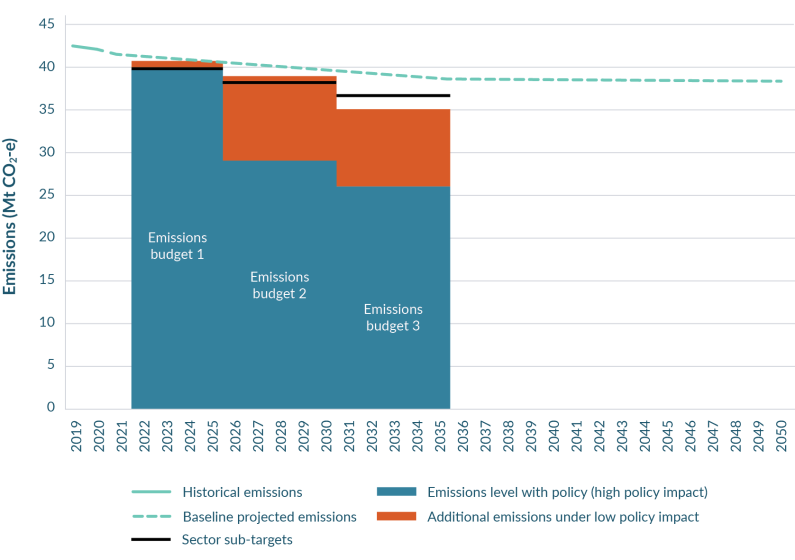
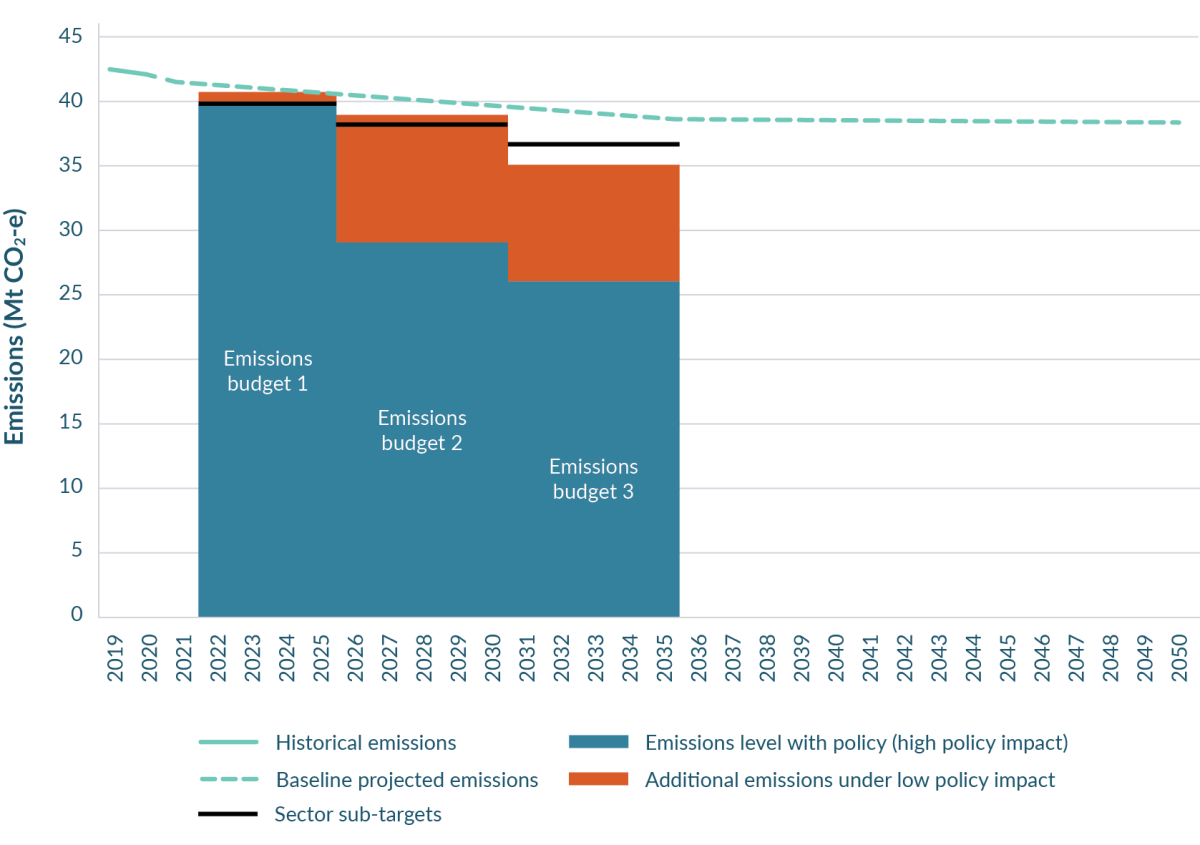
The actions in this plan will help us lay a strong foundation for reducing agricultural emissions. As initiatives in this chapter are developed their contribution to reducing the shortfall between agriculture’s sub-target and the expected policy impacts for the first emissions budget will become clearer.
The Government’s baseline emissions projections are based on current policy settings. These include the expected impacts of freshwater regulations, productivity gains, afforestation programmes, NZ ETS-driven land-use change and the new initiatives included in this chapter. They also assume agricultural processors are entered into the NZ ETS from 2025 onwards.* This is the legislated backstop if sufficient progress is not made on designing an alternative farm-level pricing scheme.
* In this scheme, processors would report and pay for emissions produced on farm. The projections assume 95 per cent free allocation, which means processors would only initially have to pay for 5 per cent of reported emissions.
We have a big task ahead. However, reducing our agricultural emissions over the next 30 years can help us build a strong and resilient agricultural sector for the future. We need to do this together.
Local government (regional councils) will have a key role in the implementation of Essential Freshwater reforms, which includes regional councils administrating the regulatory Freshwater Farm Plans. In some cases, freshwater mitigations will have climate co-benefits, so the way local government carries out this function is an opportunity to support our climate goals.
Our farmers and growers have a key role to play in lowering their emissions and moving to regenerative production systems.
Aotearoa New Zealand’s innovators and processors can build off our expertise in agriculture to help provide solutions to the world on low-emissions nutrition.
Actions taken to reduce agricultural emissions must take the opportunity to build climate change resilience for Aotearoa producers, and not limit future options that could be progressed as part of the national adaptation plan.

Chapter 13 Agriculture
May 2022
© Ministry for the Environment